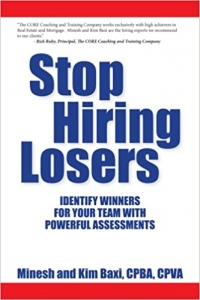Blog Your Sit-Means-Sit

Judged by Shakespeare’s famous line “A rose by any other name would smell as sweet”, the Bard didn’t think monikers were very important. Apparently, to investors selecting stocks these days, they are: on average, Harvard Business Review found, companies with short, simple names attract more shareholders and generate greater amounts of stock trading than companies with hard-to-process names.
While I’m not currently a pet owner, the other day I came across what has to be my all-out favorite corporate name – Sit Means Sit. No explanation needed – not only do you know immediately that what the company offers is dog obedience training, you get a sense of the owner’s stance is on the subject.
Blog readers need to perceive you as an expert in your field, I teach at Say It For You. And for that to happen, I believe, you need to clearly demonstrate a firm perspective on your subject. There’s no lack of information sources – and no lack of “experts” (purported or real) on any topic In blog marketing, therefore, we need to go beyond presenting facts, statistics, features, and benefits, and get authentic and yes, even opinionated. Taking a stance on your subject, using the blog content writing to express a firm opinion on issues in your industry and community, is how you leverage your uniqueness.
Blogging, remember, involves providing new material week after week, month after month, year after year. We can highlight less well-known facts about familiar things and processes. We can suggest new ways of thinking about things readers already know. Still, that’s not enough. Whether you’re blogging for a business, for a professional practice, or for a nonprofit organization, you’ve got to have an opinion, a slant, on the information you’re serving up for readers. In short, as blog content writers, we must help our clients become influencers.
“We don’t train dogs the same, because not every dog is the same,” the Sit Means Sit website continues, going on to explain that the company offers programs geared to “any dog, any age, any problem”. In fact, the Sit Means Sit website contains information about different training approaches, and, in your own blog posts, there will be ample opportunities to explain and explore different aspects of your own products or services.
“When writing an opinion piece, you are taking a side on a particular issue and trying to communicate to your audience why you believe your chosen side to be the correct one,” 201digital comments. “In fact, research shows that the only type of content more popular than that which encourages reads and shares is negative or controversial opinion.”
What are those things that you really mean when it comes to delivering your service or product to your customers and clients? Blog your own “sit means sit”!





Follow us online!